A recent House of Lords exchange shed light on the future of the UK’s aircraft carriers.
During the discussion, Lord West of Spithead, a former First Sea Lord, highlighted the strategic importance of the UK’s two aircraft carriers, HMS Queen Elizabeth and HMS Prince of Wales.
Speaking on their value to the Royal Navy’s operations, he asked whether the government’s plans would ensure these carriers are equipped with the right aircraft to fulfil their roles over their expected 50-year lifespan.
“My Lords, we have two aircraft carriers, which will last for some 50 years. Will the Minister confirm that, in this package of air capability—which we absolutely need and do not have enough of—some aircraft will have the capability of operating from those carriers?” he questioned.
Responding, Lord Coaker, Minister of State for Defence, acknowledged the importance of matching air capabilities to the carrier fleet.
He noted that, “I certainly believe that the noble Lord is right to point out that, if we have aircraft carriers, we need aircraft to operate from them. I accept that. As far as the defence review is concerned, there is no doubt that we will look at the future capabilities we need, in respect of how those carriers are deployed and where they should be deployed, but also in respect of the necessary air combat power we need to meet the threats that the noble Lord will know well—as indeed will the noble and gallant Lord, Lord Stirrup.”
Lord Coaker further highlighted the government’s pledge to reach a defence spending target of 2.5% of GDP.
The conversation also touched on international partnerships, with Baroness Smith of Newnham pointing out the UK’s involvement in the Global Combat Air Programme (GCAP) alongside Italy and Japan. She asked about the possibility of bringing in other countries to strengthen resilience within NATO.
Lord Coaker confirmed that while the UK is currently focused on this trilateral partnership, discussions about including other allies are ongoing, stressing that “Interoperability is key.”
He noted that various NATO members are developing their own advanced fighter projects, and ensuring these systems can work together remains a priority for the UK.


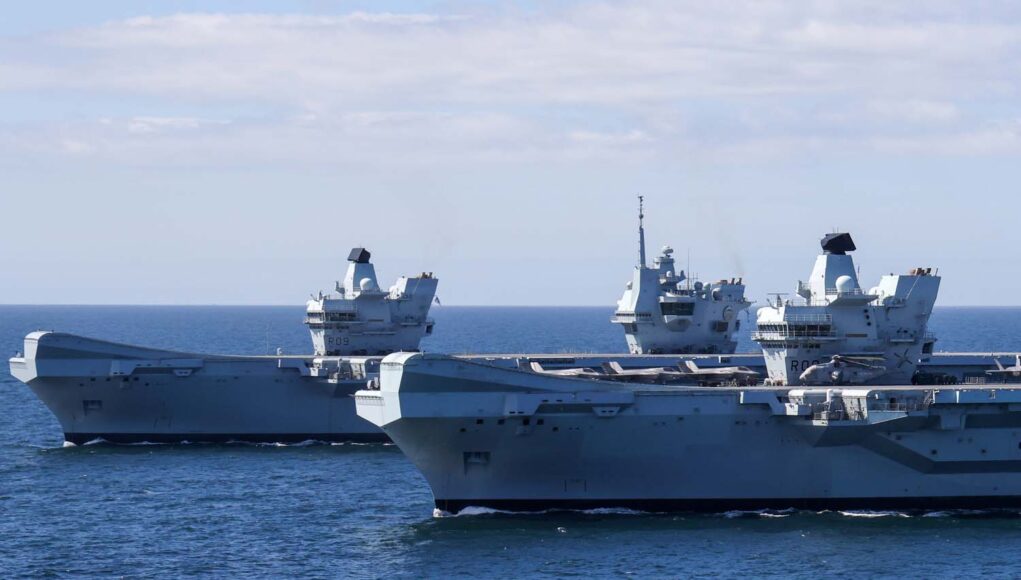
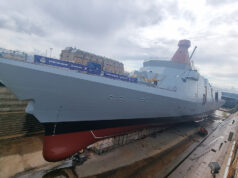
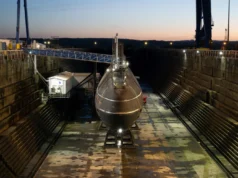

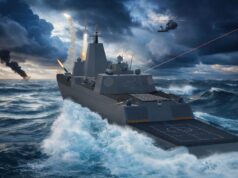
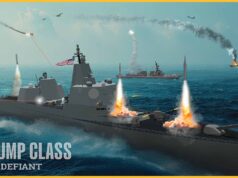
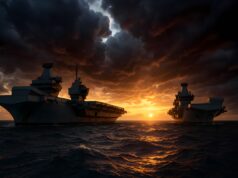
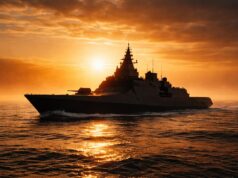

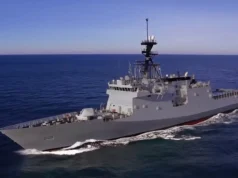

The former First Sea Lord asks: Will the Minister confirm that, in this package of air capability—which we absolutely need and do not have enough of—some aircraft will have the capability of operating from those carriers?”
I can confirm to Lord West that we have already some aircraft that have the capability of operating from those carriers. But he should know that.
Should he not have asked a question about the size and timing of the Tranche 2 order for F-35B, about further F-35B orders or what aircraft will operate from the carriers after the end of the F-35B era?
Errr, actually he did. Try reading it again and look at the subtext. He says with any upcoming aircraft package purchase can you confirm that there will be more aircraft for the carriers because right now we don’t have enough. He’s also saying the RAF also need more aircraft which is pretty generous for a former 1SL.
He also isn’t wrong on either count.
The minister in his reply said that for former 1SL was right but clearly wasn’t going to commit to anything before the upcoming defence review which we all are dreading being about cutting money from defence rather than supporting it in the way it desperately needs.
Great summary. Yes I thought the fellow asking the question was exceptionally polite and the other fellow essentially batted him off whilst agreeing with him.
Realistically I feel that there will be a degree of flexability wrt where out f-35’s are utilised. As others have speculated, I think that routinely we will be looking to have 12 deployed on one carrier with 24 for special circumstances.
I understand that at one point 36 being deployed was mentioned, but I cannot see this being feasible for a while.
I think the fight will be around how frequently we are to deploy more than 12 and so whether we need more airframes to make this a reality more of the time, or whether we can essentially make do with 12 per carrier (plus spares and training airframes)
so….we may have aircraft on them, but they may not all be ours …and Tempest will be amalgamated with other 6G fighter progams( *cough France)- Or is that just my chronic cyncism appearing again?
The first part yes and it is something we have done before and to be perfectly honest that was part of the reason for their design. Being able to operate in concert with NATO allies is actually a pretty sound operational strategy. The US have also operated aircraft from the CdG and the French from a US CSG. We also did the same when we had Cats and Traps carriers.
Tempest is an interesting one from the sound bite it could mean that or that it was key to include things like the F-35’s advanced data links so that the aircraft from other nations can share data and operate seamlessly together. At the moment I would suggest the latter rather than the former but ask me again when we have a flying prototype.
>we may have aircraft on them, but they may not all be ours
That is the reality. The UK is very unlikely to ever have enough F-35B’s for both GEC carriers to routinely operate with 24 aircraft embarked (with surges to 30-36), as was envisaged in the 2000’s. The RN has long accepted that 12 UK-owned aircraft is a more realistic objective, with very occasional surges to 24. I was hoping in 2021 that a USMC F-35B squadron would regularly constitute part of their air group, but sadly that is clearly not happening. If other close allies (Italy, Japan, maybe eventually Spain and Australia, perhaps even Germany one day) have F-35B’s they can occasionally contribute, great!
An unwanted upside of embarking fewer than expected strike fighters is that the QEC have a lot of spare capacity for operating UAS/UAV/UCAV drones, particularly if they are VTOL or STOL. No difficult trade-off to be made!
It was never in the doctrine to have 2 fully equipped carriers operating routinely. Plan from the start is to have 1 available at all times (albeit not quite fully equipped yet) but with enough capability to carry out the duties needed.
If we end up in a massive Nato conflict the US would no doubt be on board regardless with its own F35B’s.
Drone tech has undoubtedly moved on vastly quicker than most would have thought 20 years ago which ironically plays into the capacity of having the two carriers.
I partially agree. It was originally planned that each carrier was to be available about 300 days per year, with one always deployed or at high readiness for carrier strike:
KUR 3, Availability: The CVF shall provide one platform at high readiness for its principal roles at all times.
To enable this, based on recent experience (e.g. carrier ops for Operation Grapple, former Yugoslavia) the RN/FAA needed four front-line squadrons of 12 Future Carrier Borne Aircraft (Sea Harrier replacement) by 2015 to ensure that an air group with two FCBA squadrons was always available. When FCBA became merged in to the Joint Combat Aircraft programme in 2001, the RN’s allocation of the planned 150 aircraft buy was a disappointing 60, so the RN spent the next few years being nice to the RAF, hoping that it would agree to fill the gap. And the rest is history …
.
A dissapointing 60? That is WAY more than were ever available in the Sea Harrier days!
Interpolation is key…. well the best way to ensure that is to have the same aircraft.
The RN’s Maritime Enterprise Planning Group, which oversees UK naval planning and strategy, has been asked to consider the implications of selling one of the carriers. Probably just a prudent “nothing is off the table” type study of options by the SDR review team, but worrying enough for someone to risk leaking it to the newspaper’s.
I believe the word ‘implications’ should be replaced with the term ‘cost savings’
To pay for more uneconomic immigrants or the train drivers pay rise for next year or buying French electricity?
Yeah usual blowhard righttrash shoehorn in of your favourite prejudices 🤡💩🤣
Hasn’t the OBR just stated low end migration is actually a drain on the country. The same OBR that trashed Truss’s budget and the same OBR tasked with reporting on the Tory black hole.
I wouldn’t overly worry about one of the carriers being sold off…. We need both to maintain the ability to deploy one at short notice… with one, as per the French, it spends half its life in dockyards/not in service…. But then again, in this increasingly more fraught world, I never thought we’d give back Diego Garcia!
Diego Garcia
The Islands have been given back but the airbase remains.
Realistically, who would we even sell one to? The only 2 countries that have the aircraft to operate and the capability to project power are Italy and Japan, and they both have their own carrier programs sorted already.
Maybe South Korea would take one, but they’d need to buy F-35Bs, which aren’t currently on order. Spain could buy it, but their Harriers are probably shagged by this point so they’d need new aircraft. If it got arresting gear, it could maybe operate Mig-29Ks with the Indian navy.
Ultimately, anyone who wants to and can operate a carrier, already is (or is working up to it). I think South Korea and Spain are the only possible options, but still highly unlikely.
Australia maybe ?
At a special price for “AUKUS” mates?
Well reported on the very site in October 23 Europe is considering an aircraft carrier. Merkel first suggested it. Great candidate for our new EU security pact.
It would be strategically nuts to sell off one of the carriers.
It was never the plan or intention to have both carriers operational at the same time. There aren’t the crew, the aircraft, the escorts, the Merlins, the RFAs etc to form a second carrier strike group. Rather, the role of the second carrier is as a reserve. Should the operational carrier be damaged or lost in action, the reserve carrier would put to sea with whatever reserve crew and escorts could be found. Having a reserve capability is a key military tenet.
Problem is that the politicos and MOD accountants neither understand nor wish to understand military things. They see only an expensive carrier tied up alongside with skeleton crew and no aircraft and think whoopee, we could save a lot of money here and generate a good little income from sale. You can explain the value of reserves to them until the cows come home, but they see it as the next guy”s problem, the next PM or SoS, they are in the business of ‘driving’ instant economies.i have had that depressing experience.
Not sure any such proposal, were they to make it, would get through Parliament, the Defence Select Committee and chums would give it a good public kicking.
I would say there is almost no chance of them selling off one of the carriers..even if they wanted to who would be in the market for a 70,000 ton f35b carrier..
I do think there is a not unrealistic chance that they will do as they have to the Albions and move one into extended readiness. After all the plan was always to have one available and using long term readiness they can cover the long refit periods as well as still be able to bring up both in time of war if needed.
It would also save a lot of money and sort the crewing issues out in one step.
The RN does need a rebalance and extended readiness may be a way to do that, without impact on carrier availability.
The news about selling one broke in February and the suggestion was that by 2028 both carriers will become unaffordable so one would have to go. So the analysis has already been done for the Tories it would put global Britain vision in tatters so they committed to increase defence spending later in the decade . The government has already increased wages, promised better accommodation, hiring more civil servants in the MoD and promising to buy more expensive UK equipment but no increase in the defence budget.
These are expensive assets to keep in exteded readiness, For instance the autmated weapons handling system will need regular servicing, license fees need to be paid for software and cobat systems.Upgrades will.heed to be applied to both ships. And of course there will be a temptation to rob kit and parts to keep the other carrier at sea.
Sell is the optimistic outcome at the end of the day without funds left to rot and sold for scrap could be one outcome. We have a history of investing in defence project then see them chopped up to make bean tins. On the plus side Port Talbots new government funded furnace will have plenty of recycled steel to feed it 😀
Agreed Jonathan, in particular your point on crewing issues. I foresee one of the carriers entering extended readiness. It would be a short-sighted mistake to sell of one these two strategic assets.
How do you know that?
For a long time I have wondered why the US allowed the UK to build these carriers The US isn’t short of large aviation decks the West. It is useful if the Europeans have CVS for to enable helicopter operations beyond the scale allowed by frigate flight decks say TG screening. But there was no for Europe to have strike carriers. Especially as the West is short of escorts and boats. The only reason I could come up with was that somebody over there saw the need as an adjunct to DARPA’s ASTOVL/CALF program a carrier dedicated to STOVL aircraft. They would have known the UK would happily bash metal but would have never invested in supporting systems to the degree carrier operations need them. ** Letting the UK build them would have not been a threat to the big carrier navy. But if the balloon goes up the USMC has extra deck space for a STOVL fighter force (Harrier or F35b or whatever) to take pressure off LHx capacity for MV22 assault operations. Everybody is a winner. (See failed moved to dockless USS America formfactot). The geriatric RN can pretend it is relevant again. The USMC gets extra hulls. Everybody is a winner.
** If is fashionable on sites like this to laugh at the French CdeG. At least the French understood you can’t operate a modern carrier without nuclear power. They fly E2 which is in another league compared to lacklustre Croswnest. They have their own fighter and didn’t go cap in hand to the US for scraps and crumbs. Yes they only have one hull. But when in service it is a true carrier. We have two conventional ships without the necessary fleet train to support them for a true operational deployment. And as wonderful as the Bravo it is without numbers and without suitable weapons it is just a toy.
Well, that was better out than in wasn’t it?
Perhaps you could suggest where we go from here?
You can tell us what you think if you like. I note on sites like this for everybody who puts up a few paragraphs there are at least half a dozen who do nothing but snipe from the sidelines. But you are not going to do that are you? No? Thought not. I was just making conversation to expand the conversation out. Knowing where you have been is a good in help to understand where you may be heading.
The main problem for the UK at the moment is the FJ pilot training pipeline is broken. It doesn’t matter how many Bravos we have on order if we have nobody to fly them. Fix that first which I think will take us at least ten years. Until then we have to continue to rely on Uncle Sam and the Italians for help.
I can see Labour cutting the Bravo buy officially to 48 airframes. It would be nice to see money spent on Crowsnest but Labour have other priorities. We have a stealth platform at sea that can’t take advantage of BVR missiles being controlled by offboard sensors.
The RN will continue to limp along.
I always find it odd when little minds get agitated because somebody with more knowledge says something. I suspect you are agitated quite a lot of the time.
Well, I am a ( temperate) civvie so I have no problem bowing to your superior knowledge. Neither do I have access to the treasury spreadsheet so I don’t know what we can afford.
48 F-35s is enough to guarantee one carrier always available. If we are short of money it would be a meaningful place to pause. Nothing wrong with augmenting with allied aircraft; nothing wrong with deploying a second carrier with allied aircraft in extremis.
My understanding is that our prime problem is recruitment; our main european responsibility is the Atlantic, our main security interest is Gulf gas and our most useful contribution to wider global stability is presence in Indo Pacific.
I would push on with the frigate builds and add some more and the missile etc enhancement programs. I see the main reason for buying more F-35s to be that the RAF is short of fast jets. There you go.
Superior knowledge my arse, ‘kin troll. Look across the other ukdj blogs. 🙃🕳️Btth.
Luke 8:17 For there is nothing hidden that will not be disclosed. 🙏😉
👌.
I must have missed something along the way. Since when does the UK need the US’s permission to build aircraft carriers? Rather, I would think the US would welcome them into the NATO force. Of course, the US would naturally assume that the UK wouldn’t build two aircraft carriers if it didn’t intend to purchase the aircraft to go along with them.
You have missed something. I forget that many here are very ignorant about how the world works. To give you something to think, I know it will hurt but bear with it, go do some research on Canada and nuclear submarines. And then have a wider think. You might discover other similar examples.
I would think the US would welcome them into the NATO force.
Well as I said,
if the balloon goes up the USMC has extra deck space for a STOVL fighter force (Harrier or F35b or whatever) to take pressure off LHx capacity for MV22 assault operations.
Though it is interesting you see this simply in terms of NATO. And as I said we are short of escorts and boats. How does adding extra aviation deck tonnage help with that when the US already has many such assets? The only real maritime threat in NATO region is Russia. How does extra maritime aviation capacity help against Russia which is a land power? Or are you on of those who think NATO is now the world police? You really have no understanding of any of this beyond knowing some words and acronyms and throwing them at the page do you?
You are correct certainly carriers are of real value thousands of miles from home where there’s no allies to provide a land base. Our new Europe posture means we don’t actually need them. They tie up frigates and destroys as escorts which could be doing other duties.
Where we would need them is if China and US kick off over Taiwan but UK and Europe doesn’t have to get involved unless mainland North America is attacked.
The US wouldn’t turn down UK carriers being deployed in a Pacific conflict if it were offered. Yes the US has a lot of deck space but they know they will loose some in a war with China.
Question why do you think NATO region Russia is the only threat. An attack on any NATO member will require a potential response from all of NATO. So if Canada or USA except Hawaii are attacked NATO has to respond. It’s entirely plausible mainland North America could be attacked by countries other than Russia.
You are completely wrong. One of the reasons the RN opted for such large carriers was to be able to generate similar sortie rates to a USN super carrier. ( Lord West evidence to the DSC in 2004.) We were already committed tier 1 partners in the JSF project. The USA was very keen for the UK to be able to take pressure off its own carrier fleet that was increasingly focused on the Pacific. They have provided considerable support in regenerating RN fixed wing capability.
Of course, the reality is still far short of the ambition which was to replace 3 carriers with 2 and acquire 138 F35B as replacements for the joint Harrier fleet.
The US might hate us having carriers, they also might love it, it doesn’t really matter either way. The only one who has any real say in what the Royal Navy is allowed to build is HM Treasury.
Our benevolant masters in the Exchequer deigned to allow us carriers, and thus we have them.
You are so wonderfully prochrial.
‘Prochrial’? As in Chemistry?
Last I heard the US was very in favour of our large carriers on the basis that their carriers can’t be everywhere at once and with an increasing threat from China in the Pacific additional large flat tops from allies were a welcome addition to western naval power, providing they actually have appropriately sized airgroups and can actually be deployed on a regular basis……
Our flat tops will never be deployed to support the US in conflict in tge Pacific, Europe setting itself up to duck that fight.
The USA were one of the main cheerleaders for us building the QE carriers.
The US wants to have carriers available for three regional wars simultaneously. In a very good year Nimitz-carriers have 25% on-station availability. That means the US needs 12 strike carriers to achieve this goal. It has 11. For a while, when Britain was looking at building the QE class it only had 10. That’s why the US hopes the UK and France could shoulder some of the load, providing strike carrier availability.
The US has two America class flattops partially optimised for strike (no well deck and larger hangars). The best they are likely to achieve is to work maybe 18 F-35Bs and one or two rotaries. In an even a moderately difficult conflict zone, they would want a full squadron of 12 providing battlespace dominance, leaving only half a dozen for strike, barely a pickprick in US terms. In a high threat environment all the fighters would be needed for CAP, alert, spares, etc, and doctrinally they wouldn’t be able to generate a strike force at all. I say doctrinally, because the US doesn’t like a fair fight. It requires massive overmatch for BSD, so whereas the RN could almost certainly generate some strike with these numbers, it would be too risky for the USN, and without sufficient battlespace dominance, they are going nowhere. I suspect the USMC would be okay with a lower number too, but they don’t sail the ships. The US only has two gator flattops this good for strike, and that was a compromise, with the USMC having to almost beg to try the concept out. The Wasp class and the rest of the America class ships can carry fewer fixed wing and would be far worse for strike, unless teamed up with a “proper” carrier providing protection. That having been said, Wasp class carriers have been used for strike in low threat environments because of the lack of Nimitz class.
The reason the US is short of CVNs is because there’s only one place in the US that can build them, Norfolk News, and it hasn’t been able to build them quickly enough. While it would make a huge amount of sense for the US to build half-a-dozen QE-sized conventionally powered CATOBAR carriers in Mississippi, they won’t for too many reasons to list.
Even if the RN want down the nuclear route with just one carrier, they would of still of opted for EMALS cats & traps for launch and recovery of aircraft, just like the Ford class CVN.
Too late we missed the boat and went white elephant losing a capability for fifteen years.
These have zero ability to project power anymore of even protect a naval battle group.
And can only operate against a few non peer states.
How much flying time has there been done with the Apache’s off the carriers? Obviously a completely different role to the F35 but may offer other options in certain situations?